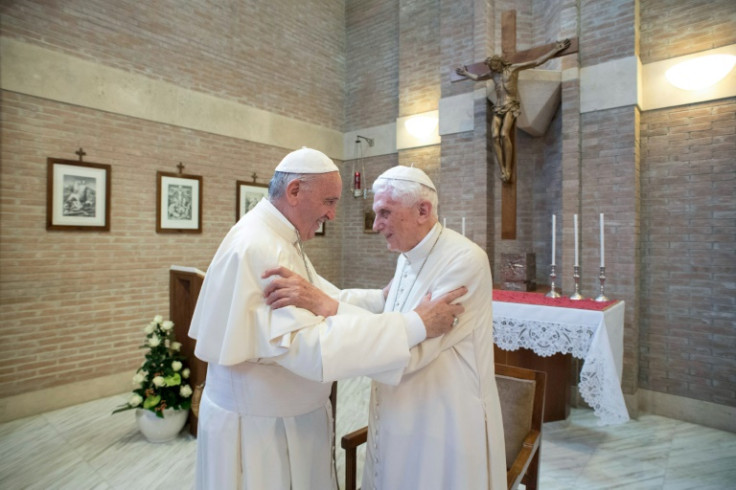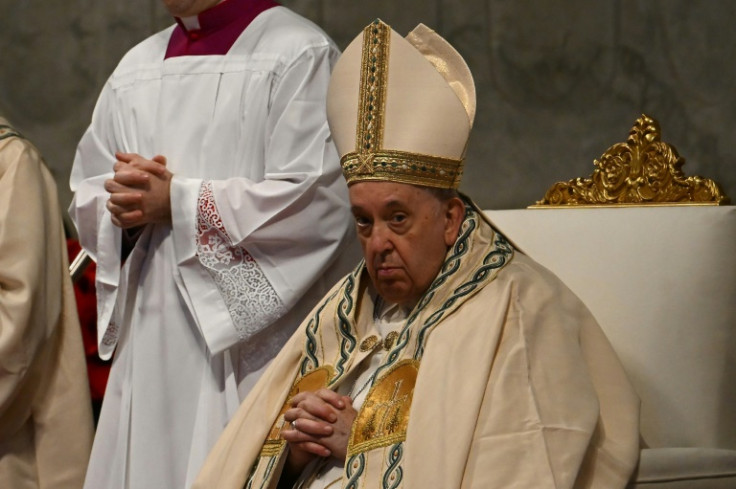New chapter for Pope Francis after death of Benedict XVI
Pope Francis enters a new phase of his papacy free from the constraints of co-existing with a predecessor.

With the death of Benedict XVI, Pope Francis enters a new phase of his papacy free from the constraints of co-existing with a predecessor, but conservative criticism of his reforms may not end.
For the first time since his 2013 election, the Argentine pontiff is squarely at the helm of the Catholic Church and its 1.3 billion faithful without another man in white -- former pope Benedict XVI -- also at the Vatican.
From Benedict's surprise resignation a decade ago until his death Saturday at the age of 95, the German theologian's lingering presence at the Vatican had caused confusion within the Church, fuelling a "two popes" dynamic sometimes exploited by Francis's critics.
Benedict's death "ends a misunderstanding, a situation of ambiguity, in which (Joseph) Ratzinger could be used as a standard by Francis's opponents", Vatican expert Marco Politi told AFP, using the former pope's birth name.
Although promising to carry out a post-papacy life of quiet contemplation and study following his resignation, Benedict XVI later weighed in on the explosive issues of clerical sex abuse and the possibility of married priests.
His contribution to a book in January 2020 on celibacy was viewed as a bid to boost the cause of the Church's ultra-conservative wing.
"The presence of a pope emeritus like Ratzinger, with his doctrinally conservative vision of the Church and intellectual stature, actually created a pole of tension with the pontificate of Francis, who had a pastorally very open line," Politi said.
He added, however, that the two men enjoyed amicable relations on a personal level.
Despite the complications posed by the presence of a living ex-pope at the Vatican, the former Jorge Bergoglio succeeded in carrying out a slew of reforms.
These included a recent reorganisation of the Roman Curia, the government of the Holy See, bringing more transparency to Church finances and other measures.
But Benedict's death will not end criticisms of Francis's policy, experts caution, especially given the ongoing world synod that acts as a forum to discuss major issues within the Church such as the place of women, the ongoing sexual abuse scandal and other issues.
Conservative Catholic forces will continue to use petitions and manifestos -- such as the May 2020 open letter that blasted anti-Covid health precautions as impeding citizen freedoms -- as a mouthpiece, Politi said.
"There is a civil war within the Catholic Church that's continuing," Politi said. "There are forces that want Francis to leave and want to influence the next conclave."
Francis's comments that he could follow in the steps of his predecessor by stepping down from the papacy should his health fail him have opened the door to a repeat of the "two popes" phenomenon begun by Benedict in 2013.
That may spur Francis, now 86 and suffering from chronic knee pain, to help his successors in spelling out the role and responsibility of any future pope who resigns the papacy before his death.
"Now that Benedict XVI is dead, there is certainly more room" for Francis to rectify the confusion over former popes, Valdrini told AFP, adding that making an ex-pope a "bishop emeritus of Rome" rather than a "pope emeritus" would be a solution.
Whatever the fix, Francis should "carefully avoid reproducing the pattern of the two popes in the Vatican, dressed in white, and bearing the same title", said Bernard Lecomte, author of "All the Secrets of the Vatican".

© Copyright AFP 2025. All rights reserved.





















